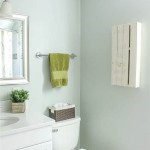Best Vanity Top Materials for Bathrooms
Choosing the right vanity top material is crucial for both the aesthetics and functionality of a bathroom. Various materials offer different advantages and disadvantages regarding durability, maintenance, and cost. Understanding these differences will help homeowners make informed decisions that align with their needs and budget.
Quartz has become a leading choice for bathroom vanity tops due to its impressive durability and low maintenance. Engineered from natural quartz crystals bound with resins, quartz surfaces are non-porous, resistant to stains, scratches, and chips, and do not require sealing. This makes them exceptionally hygienic and easy to clean, requiring only mild soap and water. Quartz is available in a vast array of colors and patterns, mimicking the look of natural stone while offering superior performance.
Granite, a natural stone, remains a popular option for its inherent beauty and durability. Each slab possesses unique veining and coloration, adding a touch of elegance to any bathroom. Granite is highly resistant to heat and scratches, making it suitable for styling tools and other bathroom essentials. However, granite is porous and requires regular sealing to prevent staining. Proper care and maintenance are essential to preserve its beauty and longevity.
Marble, another natural stone, exudes luxury and sophistication. Its classic veining patterns and smooth, cool surface create a spa-like ambiance in the bathroom. While beautiful, marble is more susceptible to staining and etching than granite or quartz. It requires diligent sealing and careful cleaning to avoid damage from acidic substances like hairspray and certain cleaning products. Marble is best suited for bathrooms with less frequent use and homeowners committed to its upkeep.
Solid Surface materials, like Corian and Avonite, are composed of acrylic and polyester resins combined with mineral fillers. They offer a seamless, non-porous surface that is resistant to stains, bacteria, and mildew. Scratches and minor damage can often be repaired by sanding and buffing, making them a relatively low-maintenance option. Solid surface materials are available in a wide range of colors and can be molded into various shapes, offering design flexibility.
Laminate countertops are a budget-friendly option that provides a reasonable level of durability and style. Constructed from layers of paper and resin, laminate countertops are resistant to scratches and moisture. Modern laminate options offer a wide variety of colors and patterns, mimicking the look of more expensive materials like granite and marble. While durable, laminate is susceptible to chipping and cracking with heavy impact and is not as heat-resistant as other materials.
Concrete vanity tops offer a unique, industrial-chic aesthetic. Concrete can be customized with pigments and textures, allowing for a truly personalized design. Sealed concrete is resistant to stains and scratches, but the sealing process must be repeated periodically. Concrete is also susceptible to cracking if not installed correctly and can be more expensive than other options.
Tile, often ceramic or porcelain, can create a visually appealing and cost-effective vanity top. Tile offers a wide range of colors, patterns, and textures, allowing for extensive customization. Glazed ceramic and porcelain tiles are relatively easy to clean and maintain, while unglazed tiles may require sealing. Grout lines, however, can be prone to staining and require regular cleaning.
Wood vanity tops bring warmth and natural beauty to the bathroom. Typically made from hardwoods like teak or mahogany, wood countertops are sealed to resist moisture and staining. Wood offers a unique aesthetic and can be customized with various finishes. However, wood requires more maintenance than other materials and is susceptible to damage from excessive moisture and heat.
When selecting a vanity top material, consider the bathroom's usage, desired aesthetic, and budget. Materials like quartz and granite offer high durability and low maintenance, while marble and wood require more care. Budget-friendly options like laminate and tile can provide a stylish look without breaking the bank. Carefully evaluating these factors will lead to a well-informed choice that enhances both the beauty and functionality of the bathroom.
Examining the specific needs and priorities of the project will help narrow down the choices. Factors like moisture exposure, cleaning habits, and the overall style of the bathroom should all play a role in the decision-making process. Understanding the characteristics of each material is essential to making a selection that will provide long-term satisfaction.
What Are The Best Materials For Bathroom Vanity Countertops

7 Best Bathroom Vanity Top Materials Which Is For Your Home The Reno Super

Comparing Bathroom Countertop Materials Which Is Right For You Ranney Blair Weidmann

Premium Bathroom Vanity Top Materials 10 Ways To Styles Them

7 Best Bathroom Vanity Top Materials Which Is For Your Home The Reno Super
:strip_icc()/102130266-3174ac7d31314c7abfc80a1b65a11dd6.jpg?strip=all)
18 Luxurious Bathroom Countertop Ideas For All Budgets

Comparing Bathroom Countertop Materials Which Is Right For You Ranney Blair Weidmann

12 Best Quartz Bathroom Countertops In 2024 Marble Com

Which Vanity Top Material Is Right For You

What Is The Best Material For Bathroom Vanity Tops Contractor Source







